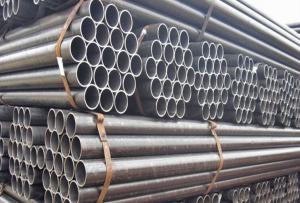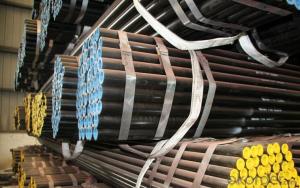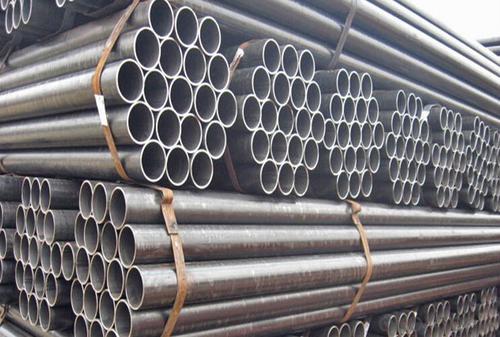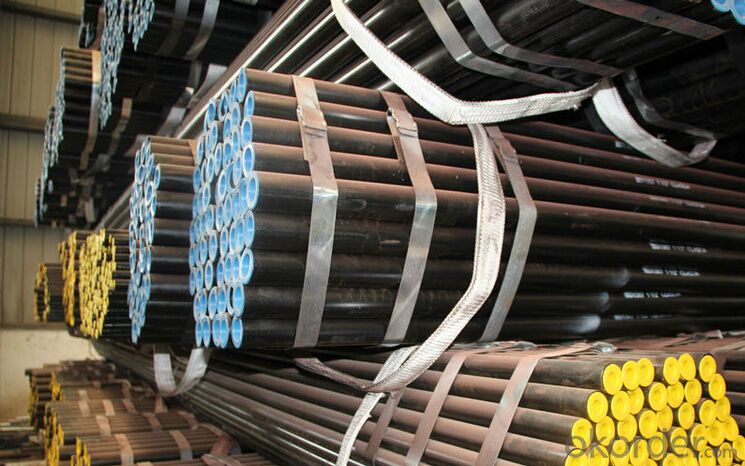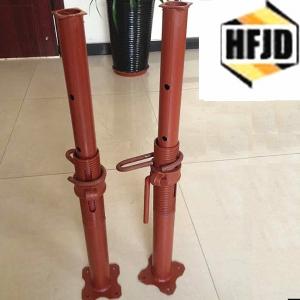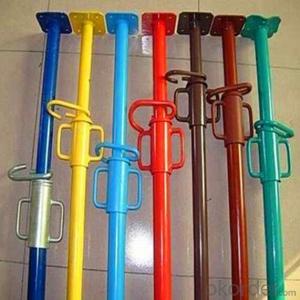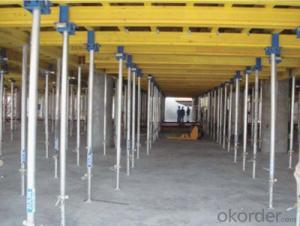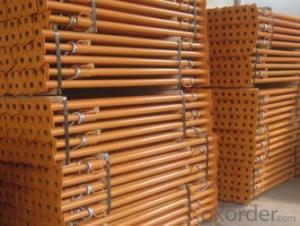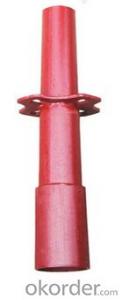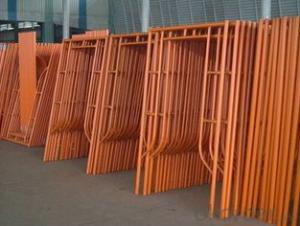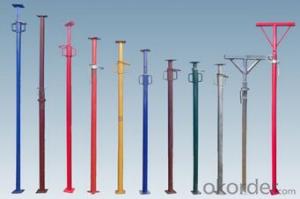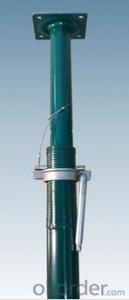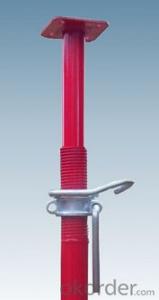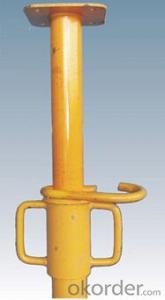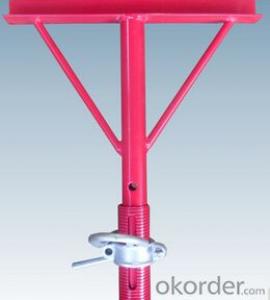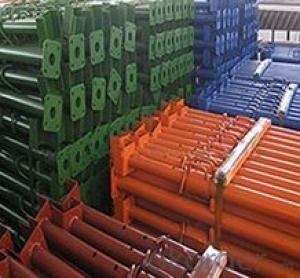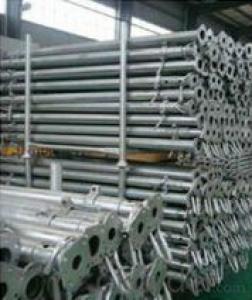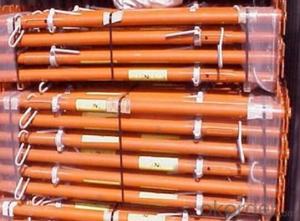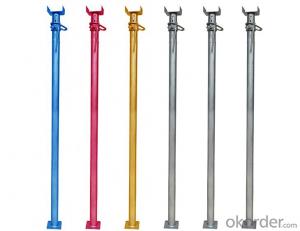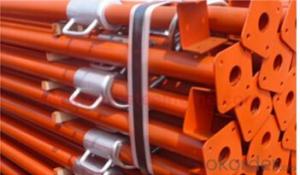Scaffolding pipe support system steel prop
- Loading Port:
- China Main Port
- Payment Terms:
- TT OR LC
- Min Order Qty:
- -
- Supply Capability:
- -
OKorder Service Pledge
Quality Product, Order Online Tracking, Timely Delivery
OKorder Financial Service
Credit Rating, Credit Services, Credit Purchasing
You Might Also Like
Quick Details
| Place of Origin: | Name: | ||||
| Adjustable Size: | Thickness: | Finishment: | |||
| MOQ: | Delivery Time: | Payment Term: | |||
| Business Type: | Color: | Location: |
Packaging & Delivery
| Packaging Detail: | In bundle or in bulk or as your request,normally in bulk can be loaded 1800-2500pcs for different size in one 20ft container. |
| Delivery Detail: | 10 to 30 days after order confirmation |
Specifications
construction props
1)Manufacturer 10 years ;
2)OEM offered,
3)Formwork,beam,concrete,slab support,
4)Promptly delivery.
| Name | construction props |
| Place of Origin | Guangzhou China |
| Size | Ø40- Ø48/Ø48- Ø56 or as your request |
| Main Material | Q235, Q195 |
| Surface Treatment | High Protected Painted, Powder Coating, Electric Gavenized, Hot Dip Gavenized. |
| Color | Silver, red,orange |
| Certificate | SGS, |
| Service | OEM Service available |
| MOQ | 500pcs |
| Payment | T/T |
| Delivery Time | 10-30 days after confirmation |
| Packing | In bulk or steel pallet or as your request |
| Production capability | 200 tons per day |
- Q: Full fastener type steel pipe scaffold with all the fastener type steel pipe support frame what is the difference? How to distinguish? Is there a relationship?
- . The construction load of the frame body top layer transfer through the horizontal bar to the top of the pole, the vertical rod is eccentric compression; 2, full frame support is defined in the longitudinal and transverse direction, by not less than three rows of pole and the horizontal bar
- Q: How do steel props contribute to the stability of excavation trenches?
- Maintaining the stability of excavation trenches requires the use of steel props. These props, which come in the form of adjustable metal tubes, play a vital role in supporting the surrounding walls of the trench and ensuring the safety of workers. One way in which steel props contribute to stability is by exerting pressure on the trench walls. Carefully positioned along the length of the excavation, these props can be adjusted to provide precise support at different heights. By pushing against the walls, they counteract lateral forces and prevent collapse, thereby preserving the shape and integrity of the trench, even in unstable soil conditions. Furthermore, steel props add structural reinforcement to the trench. Acting as vertical columns, they bear the weight of the soil and any additional loads imposed on the excavation. This reinforcement enhances trench stability, reducing the risk of wall failure and ensuring worker safety. In addition, steel props can be combined with other support systems, such as timber boards or sheet piles, to create a comprehensive safety structure. Together, these systems work in harmony to provide a stable and secure environment for excavation activities. Moreover, steel props offer flexibility during the construction process. Their adjustable nature allows for easy adaptation to changing conditions, such as varying trench depths or different soil types. As the excavation progresses, the props can be repositioned or extended to meet evolving requirements, ensuring continuous stability throughout the project. In conclusion, steel props are indispensable in maintaining the stability of excavation trenches. Through exerting pressure, providing structural reinforcement, offering flexibility, and collaborating with other support systems, these props create a safe and secure working environment, preventing collapse and ensuring the success of excavation projects.
- Q: What are the guidelines for the proper use and disposal of steel props?
- The guidelines for the proper use and disposal of steel props include ensuring that the props are in good condition before use, regularly inspecting them for any signs of damage or wear, and using them in accordance with the manufacturer's instructions. When it comes to disposal, it is important to follow local regulations and guidelines for recycling or disposing of steel props in an environmentally friendly manner.
- Q: Can steel props be used for propping up damaged structures?
- Yes, steel props can be used for propping up damaged structures. Steel props, also known as adjustable steel props or acrow props, are commonly used in construction and renovation projects to support and stabilize structures. They are made of sturdy steel tubes with adjustable height and are designed to withstand heavy loads. When a structure is damaged, it may have weakened or unstable areas that require additional support to prevent further collapse or damage. Steel props can be easily positioned and adjusted to provide temporary support to damaged areas, allowing for repairs and renovations to be carried out safely. Steel props are versatile and can be used for a wide range of applications, including propping up walls, beams, ceilings, and floors. They can be extended or retracted to the desired height, providing a customizable solution for different structural requirements. Additionally, steel props are often equipped with locking mechanisms to ensure stability and prevent accidental adjustments. It is important to note that the use of steel props for propping up damaged structures should be carried out by experienced professionals who have the necessary knowledge and expertise. They will assess the extent of the damage, determine the appropriate number and placement of steel props, and ensure that they are properly secured and supported. In conclusion, steel props can indeed be used for propping up damaged structures. They offer a reliable and adjustable solution for providing temporary support during repairs or renovations, helping to ensure the safety and stability of the structure.
- Q: Can steel props be used for temporary support in bridge expansion joint replacement?
- Indeed, temporary support in bridge expansion joint replacement may be achieved through the utilization of steel props. In construction endeavors, steel props find frequent application for the purpose of furnishing provisional support to structures during maintenance or repair activities. With their adjustable nature, durability, and capacity to withstand substantial loads, steel props prove themselves as an optimal selection for sustaining bridge segments throughout the replacement of expansion joints. The installation and alteration of steel props to the desired elevation is a straightforward task, thereby imparting stability and security to the bridge structure. Furthermore, the sturdy construction of these props guarantees their ability to endure the forces exerted during the replacement process, thereby upholding the bridge's integrity.
- Q: Are steel props suitable for use in railway tunnel construction?
- Yes, steel props are suitable for use in railway tunnel construction. Steel props are strong and durable, making them ideal for supporting the weight of the tunnel structure during construction. They provide stability and can withstand the high loads and pressures that are often encountered in tunneling projects. Additionally, steel props are adjustable, allowing for easy installation and removal as the construction progresses. Their versatility and reliability make them a popular choice for railway tunnel construction.
- Q: How do you ensure the stability of a steel prop?
- To maintain the stability of a steel prop, various factors must be taken into account and dealt with. The first and most important factor is to ensure that the prop adheres to industry standards and guidelines in terms of design and manufacturing. This involves using top-quality materials, following proper fabrication techniques, and carrying out thorough quality control checks. Aside from the design and manufacturing aspects, proper installation plays a crucial role in guaranteeing the stability of a steel prop. It is essential to place the prop on a solid and level surface to avoid any tilting or shifting. Additionally, it is vital to securely attach the prop to the structure it is supporting using appropriate fasteners or connectors. Regular inspections and maintenance are indispensable for the long-term stability of a steel prop. Periodic checks should be conducted to detect any signs of damage, wear, or deterioration. Any issues that arise should be promptly dealt with, either through repairs or replacements, to prevent further instability or potential failure. Furthermore, ensuring proper load distribution is of utmost importance for the stability of a steel prop. The load should be evenly spread across the prop, and its capacity should not be exceeded. Overloading a prop can result in excessive stress and strain, compromising its stability and potentially leading to collapse. Lastly, it is crucial to consider environmental conditions and potential external forces that may impact the stability of a steel prop. Factors such as wind, seismic activity, or nearby construction activities should be taken into account. Adequate precautions, such as bracing or additional support, may be necessary to ensure the prop remains stable under these conditions. Overall, maintaining the stability of a steel prop requires a combination of proper design, installation, maintenance, load management, and consideration of external factors. By adhering to industry standards, conducting regular inspections, and promptly addressing any issues, the stability of a steel prop can be effectively upheld.
- Q: Do steel props require any additional support at the base?
- Yes, steel props typically require additional support at the base to ensure stability and prevent any potential movement or collapse. This can be achieved by using a suitable base plate, spreading load-bearing material such as timber sleepers or concrete blocks, or anchoring the props to the ground using stakes or anchors.
- Q: How long can a steel prop be extended?
- The extension length of a steel prop is contingent upon several factors, including the prop's design, specifications, and intended purpose. In construction and temporary support systems, steel props, also known as adjustable steel props or steel shoring props, are commonly employed. Typically, manufacturers specify the maximum length to which a steel prop can be extended. This maximum length is determined by the prop's load-bearing capacity and its ability to provide adequate support. Adhering to the manufacturer's guidelines is crucial, as surpassing the maximum extension length jeopardizes the prop's structural integrity and safety. Steel props are adjustable, facilitating easy customization for different heights and requirements on construction sites. They usually incorporate a threaded mechanism that enables incremental extension and retraction to achieve the desired height. By rotating the thread, the prop can be gradually extended or shortened, granting flexibility in various applications. It is important to note that while steel props offer considerable strength and stability, their load-bearing capacity diminishes as they reach longer lengths. Therefore, the weight and load being supported must be taken into account when determining the appropriate extension length for a steel prop. To summarize, the maximum extension length of a steel prop hinges on its design, load-bearing capacity, and the manufacturer's specifications. By adhering to the manufacturer's guidelines and considering the weight and load requirements, one can safely extend a steel prop to the suitable length for temporary support in construction or other relevant applications.
- Q: What are the different types of steel prop couplers available?
- There are several different types of steel prop couplers available for various construction applications. Here are some of the commonly used types: 1. Sleeve Couplers: These are the most basic type of prop couplers and are typically used to join two props together. They consist of a cylindrical sleeve that fits over the end of two props and is secured with bolts or pins. 2. Swivel Couplers: Swivel couplers are designed to allow props to be connected at different angles or to join props with different diameters. They have a swiveling mechanism that allows for flexibility in positioning. 3. Internal Couplers: Internal couplers are used to connect two props from the inside. They are inserted into the hollow end of the props and secured in place with bolts or pins. 4. External Couplers: External couplers, as the name suggests, are used to join two props from the outside. They are placed over the external surface of the props and fastened with bolts or pins. 5. Gravity Lock Couplers: Gravity lock couplers are designed to provide a secure connection between two props without the need for additional fasteners. They rely on gravity and friction to hold the props in place. 6. Quick Release Couplers: Quick release couplers allow for easy and rapid assembly and disassembly of props. They typically have a spring-loaded mechanism that allows for quick adjustment or removal of props. 7. Adjustable Couplers: Adjustable couplers are used to connect props of different lengths or to provide height adjustment. They have a threaded mechanism that allows for easy adjustment of prop length. 8. Wedge Couplers: Wedge couplers are used to provide a strong and rigid connection between two props. They have a wedge-shaped design that locks the props together when inserted. These are just a few examples of the different types of steel prop couplers available. The choice of coupler will depend on the specific requirements of the construction project, such as the type of props being used, the load capacity needed, and the desired level of adjustability or flexibility.
Send your message to us
Scaffolding pipe support system steel prop
- Loading Port:
- China Main Port
- Payment Terms:
- TT OR LC
- Min Order Qty:
- -
- Supply Capability:
- -
OKorder Service Pledge
Quality Product, Order Online Tracking, Timely Delivery
OKorder Financial Service
Credit Rating, Credit Services, Credit Purchasing
Similar products
Hot products
Hot Searches
Related keywords
